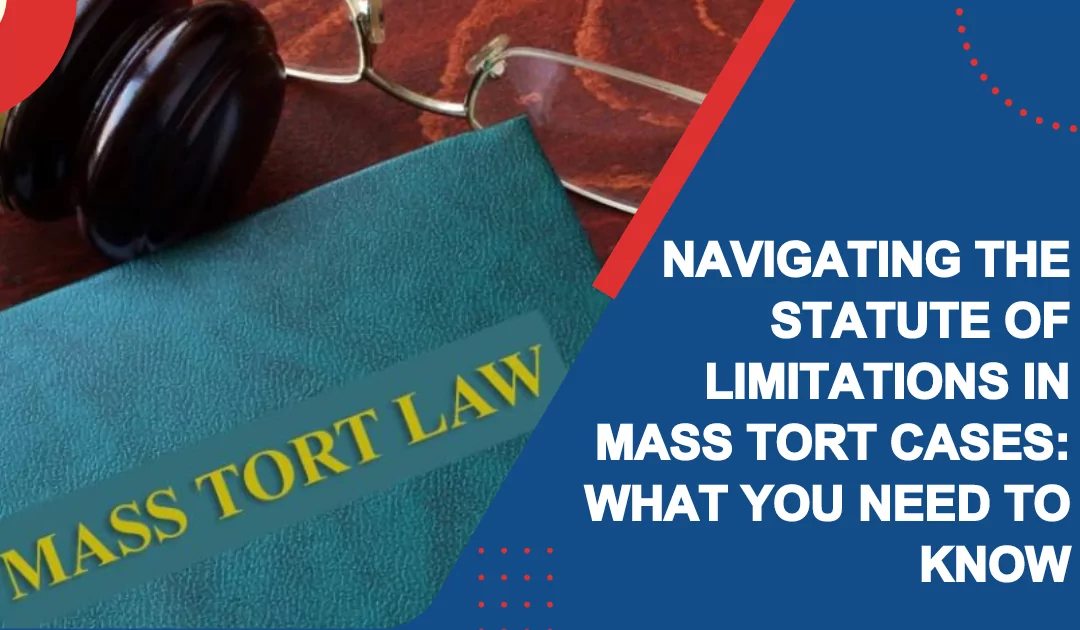Mass tort cases involve numerous plaintiffs who have suffered harm or injury from a common wrongful action by a defendant or group of defendants. One crucial aspect that plaintiffs and their attorneys must navigate in these complex cases is the statute of limitations. The statute of limitations sets a time limit to file their claim, one such case is the NEC Baby Formula Lawsuit. Understanding the intricacies of the NEC lawsuit statute of limitations ensures potential claims are not barred by the passage of time.
Overview of Mass Tort Cases
Mass tort cases are like regular lawsuits but on a much larger scale. Instead of a single individual getting injured, multiple victims have suffered similar injuries due to the same product, action, or event.
Mass tort cases can arise from defective medical devices, harmful medications, environmental disasters, or any other situation where numerous people have been harmed.
Understanding the Basics: What is the NEC Baby Formula Lawsuit?
The NEC Baby Formula Lawsuit is a mass tort lawsuit against cow milk-based infant formula manufacturers. The case claims the formula caused premature babies to develop a condition called necrotizing enterocolitis (NEC), which can be life-threatening.
The lawsuit alleges that the manufacturers knew or should have known about this risk but failed to warn consumers. They also marketed the formula as safe for premature babies when they knew it wasn’t. The lawsuit is still in the early stages.
Definition and Purpose of Statute of Limitations
The statute of limitations determines the timeframe within which a lawsuit can be filed. It promotes fairness and legal certainty by encouraging plaintiffs to bring their claims promptly, as well as allowing defendants to move on with their lives without the constant fear of old lawsuits resurfacing.
The Importance of Timing: Why the Statute of Limitations Matters in Mass Tort Cases
Timing is everything, especially for statute of limitations in mass tort cases. So, what happens if you miss the deadline?
Missing the statute of limitations deadline can be disastrous. Even if you have a strong case and mountains of evidence, you won’t get your day in court.
In mass tort cases, timing is crucial for preserving evidence and gathering information. As time passes, memories fade, documents get lost, and witnesses vanish.
Exceptions and Extensions: Factors that Can Impact the Statute of Limitations
Now, let’s talk about exceptions and extensions. Just when you think you’ve run out of time, there might be a glimmer of hope. Some circumstances can pause or extend the statute of limitations, giving you a little extra breathing room, for example, the NEC lawsuit statute of limitations.
These exceptions are known as tolling statutes. They can come into play when the plaintiff is a minor, mentally incapacitated, or serving in the military, among other situations. Tolling statutes hit the pause button on the statute of limitations, allowing the clock to stop until the specified condition is resolved.
Another potential savior is the discovery rule. Under this rule, the statute of limitations doesn’t start ticking until the plaintiff discovers, or reasonably should have discovered, the harm they’ve suffered.
But the discovery rule can be tricky, and its application varies from jurisdiction to jurisdiction. So, in mass tort cases, consult with an experienced attorney.
Navigating Different Jurisdictions: Variations in Statute of Limitations Laws
When it comes to mass tort cases, one of the trickiest aspects to navigate is the variation in statute of limitations laws across different states. Each state has its timeframe within which a plaintiff must file a claim.
When dealing with mass tort cases that span multiple jurisdictions, the complexity increases exponentially, such as in the NEC lawsuit statute of limitations. Each jurisdiction may have different statute of limitations laws.
In such cases, work closely with an experienced attorney well-versed in mass tort litigation. They can help you navigate the intricate web of statutes and ensure compliance with the appropriate deadlines for each jurisdiction involved.
Final Considerations
In conclusion, navigating the statute of limitations is critical for mass tort cases. By understanding the fundamentals, exceptions, and variations in different jurisdictions, plaintiffs and their attorneys can effectively manage potential time constraints.
Seeking legal assistance from experienced attorneys specialized in mass tort cases is crucial to ensure compliance with the statute of limitations, such as the NEC lawsuit statute of limitations, while it maximizes the chances of a successful outcome.



